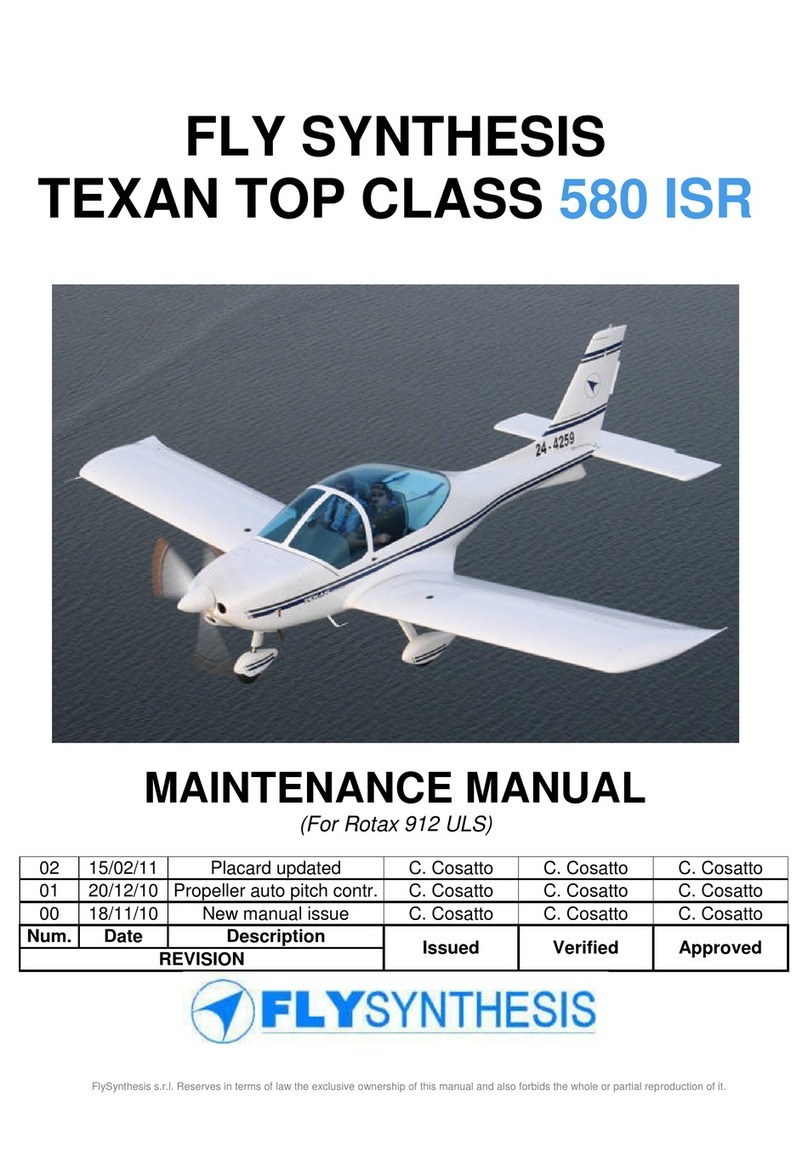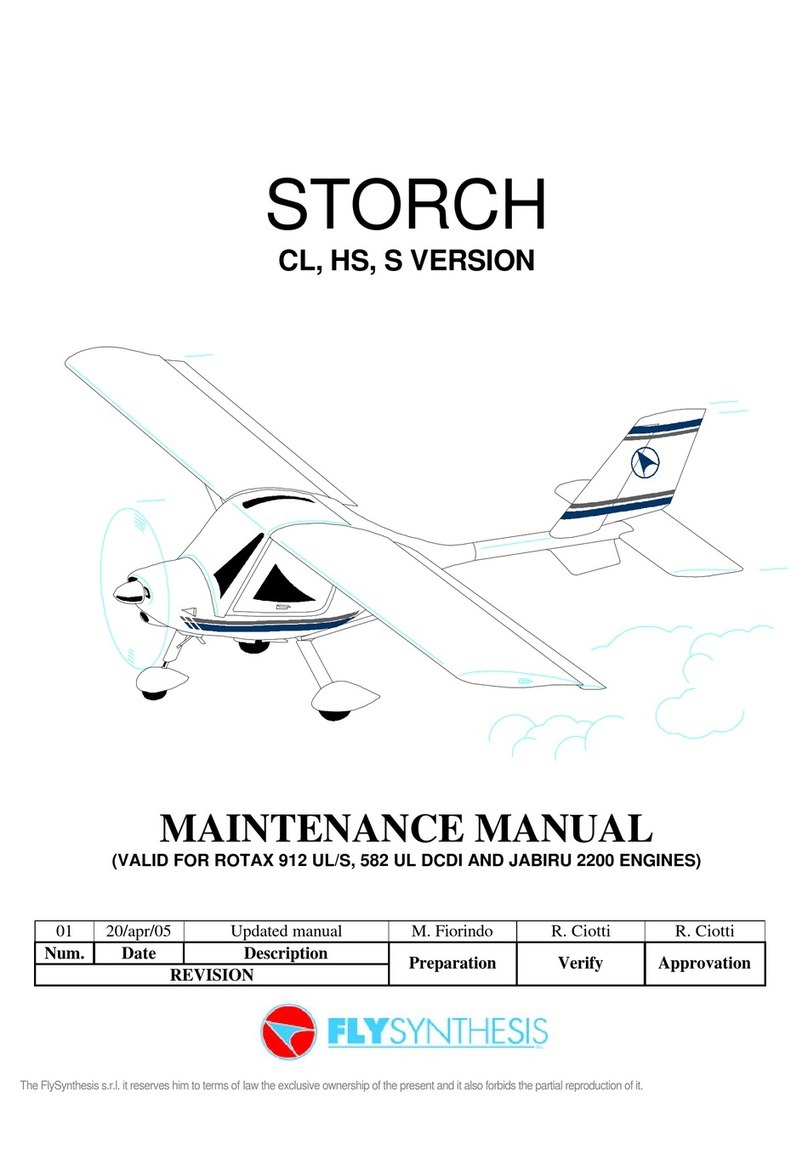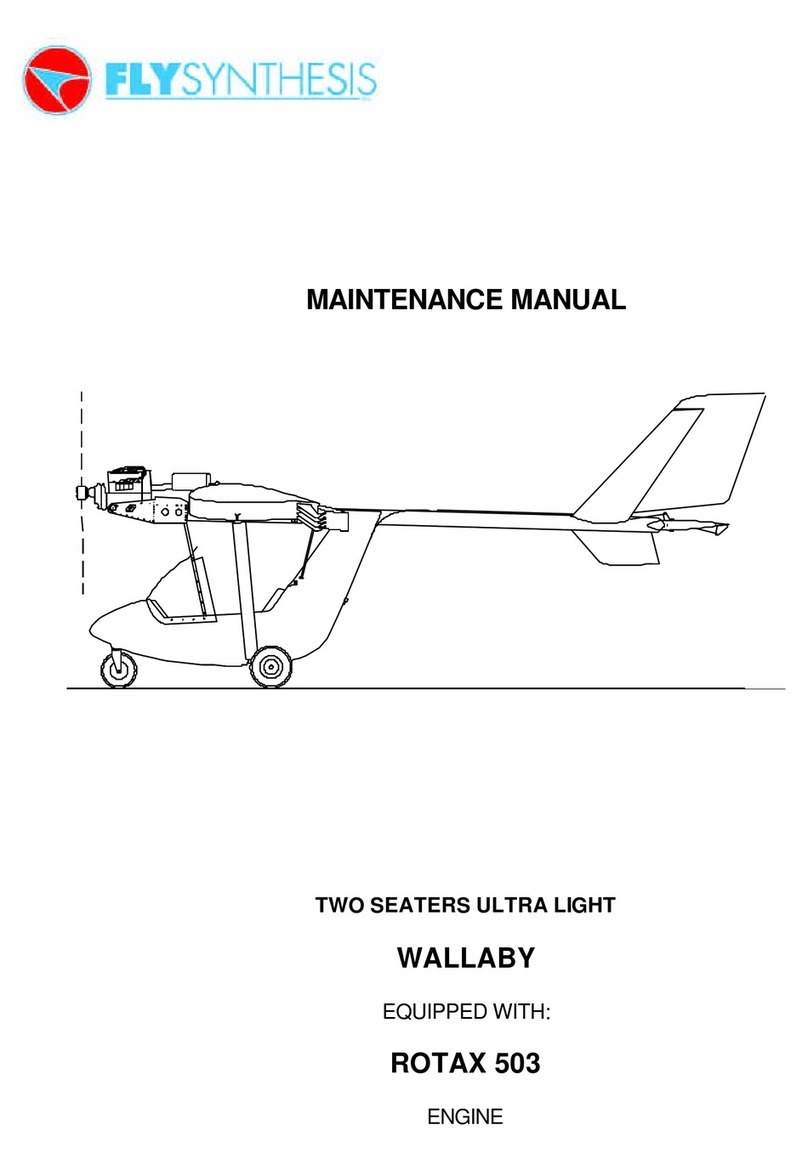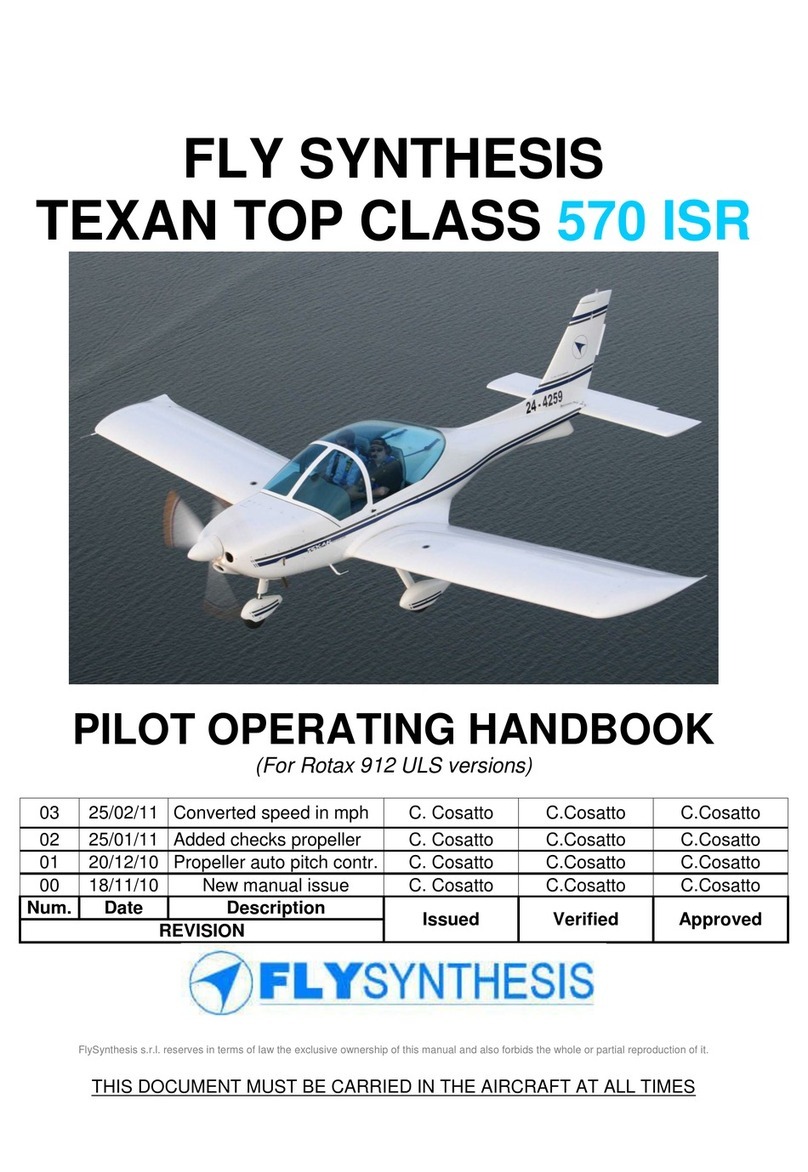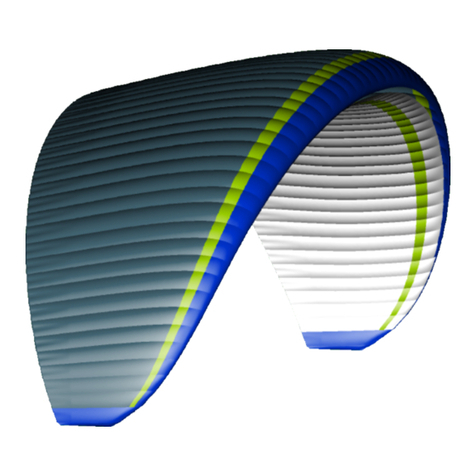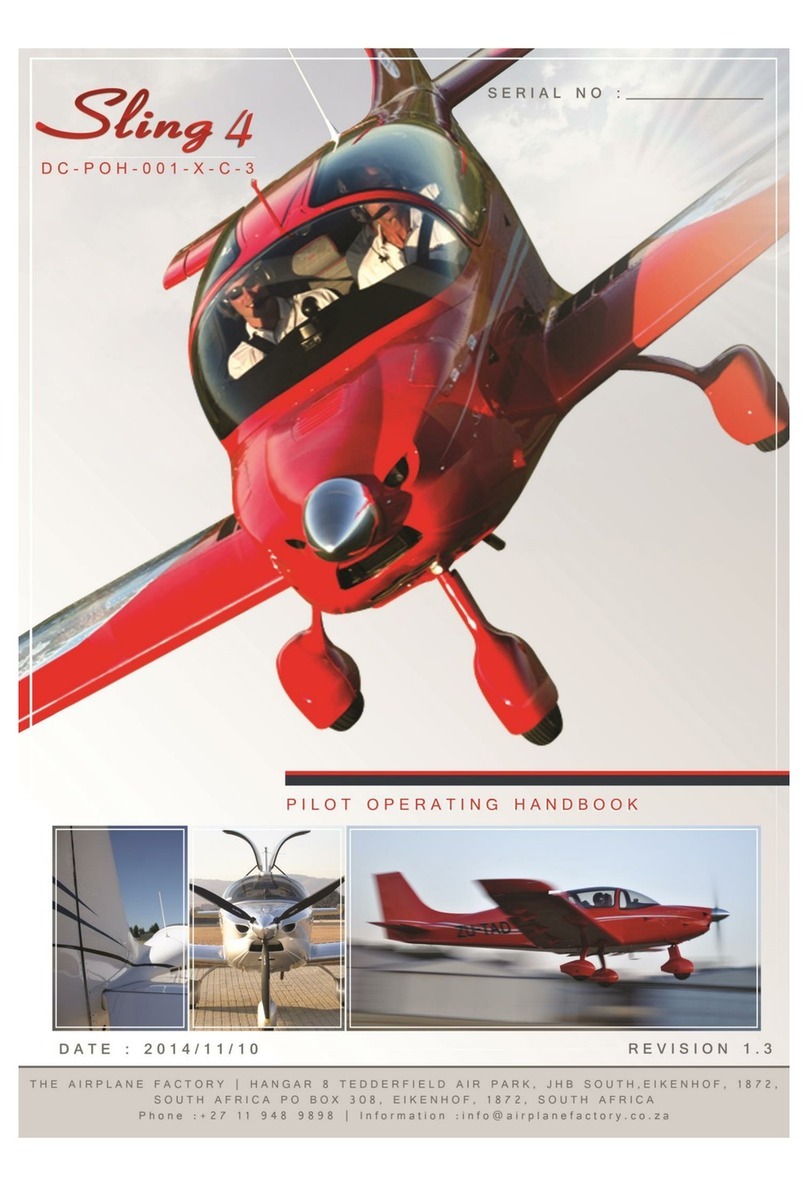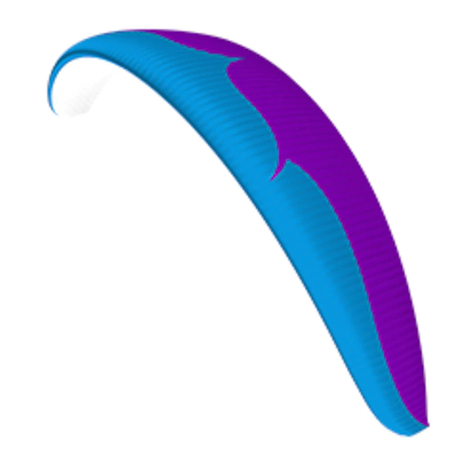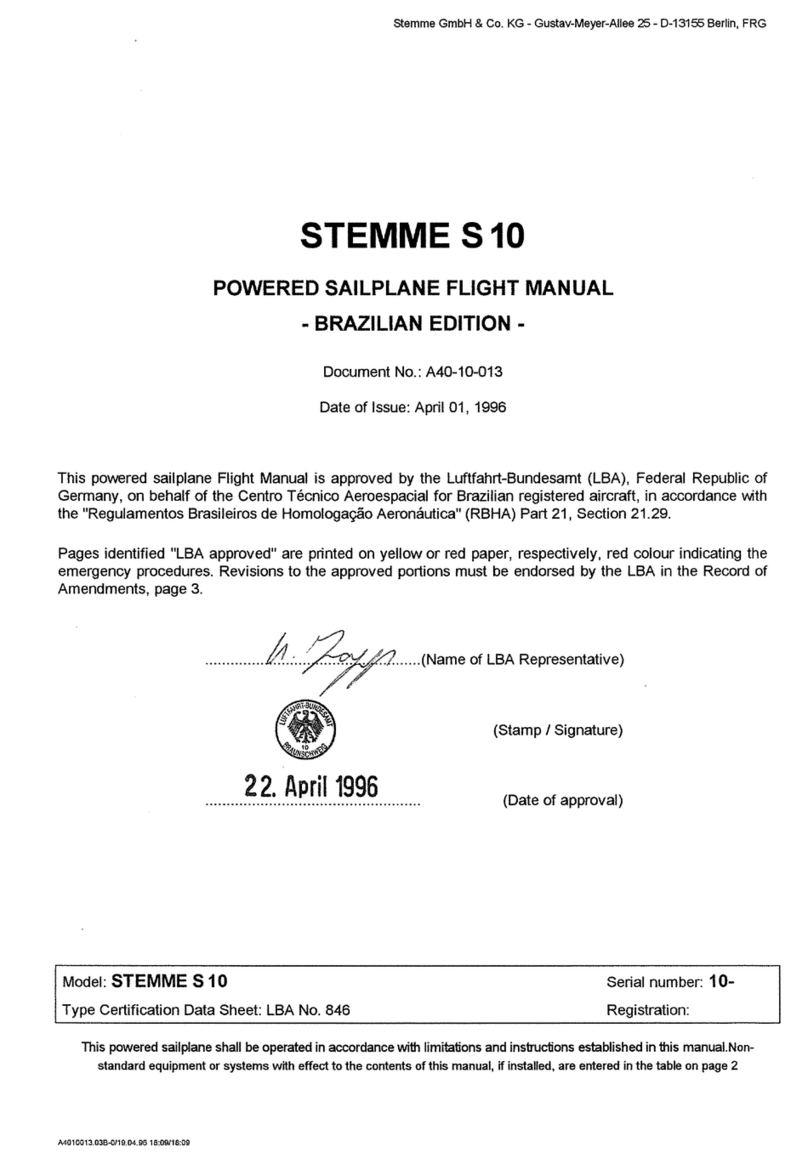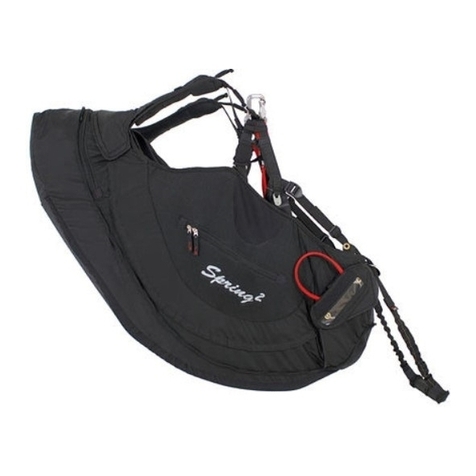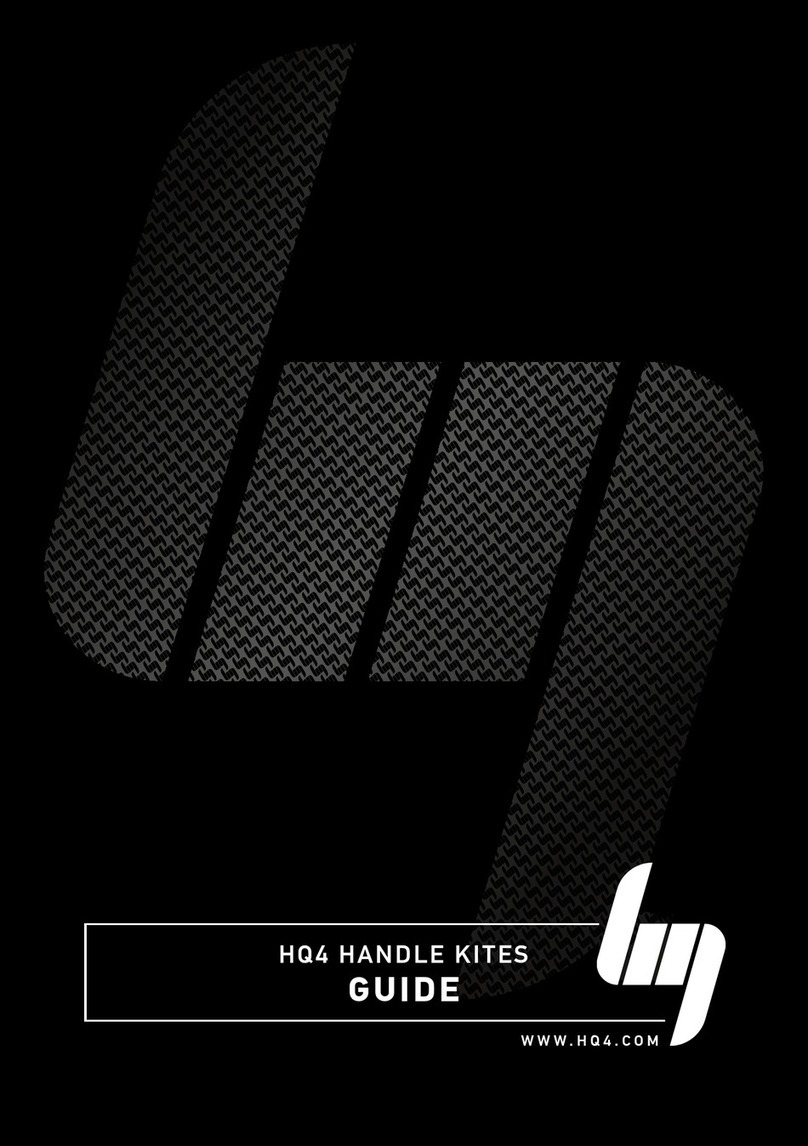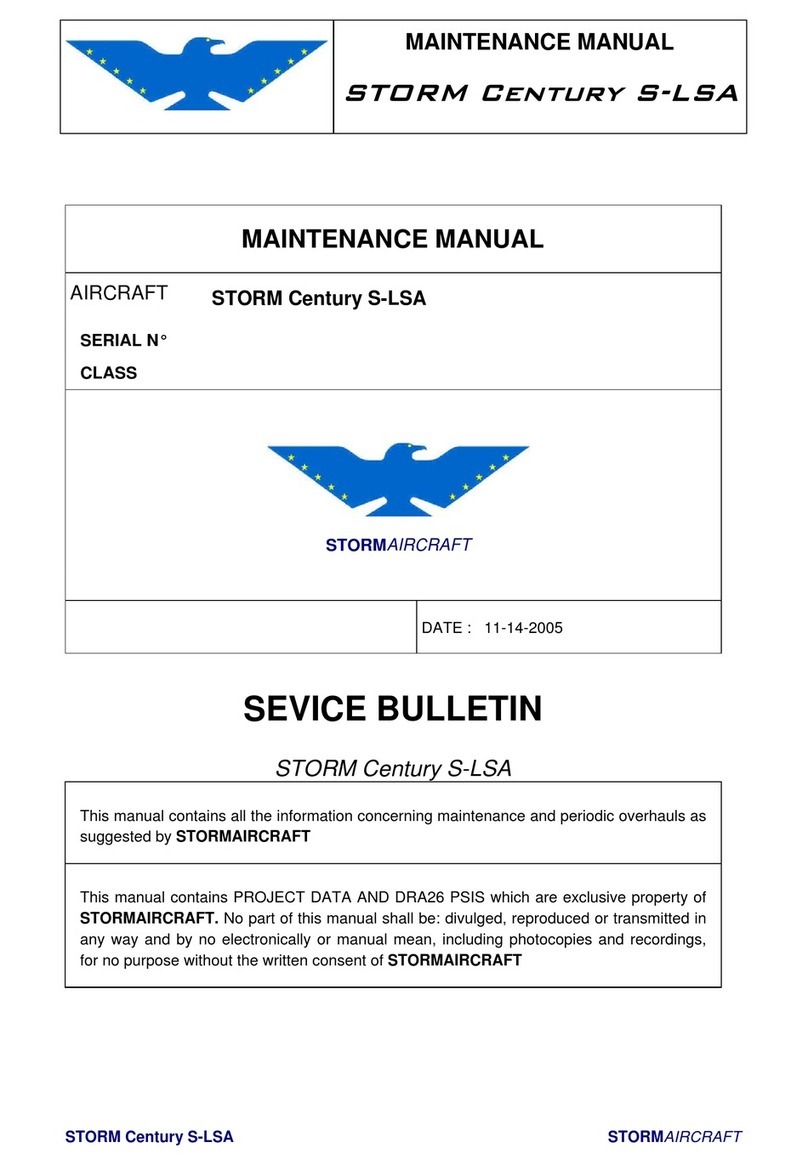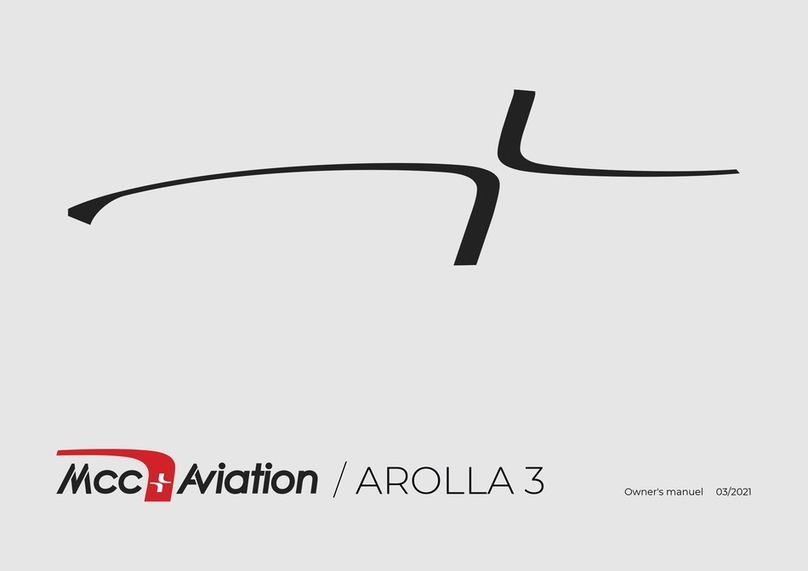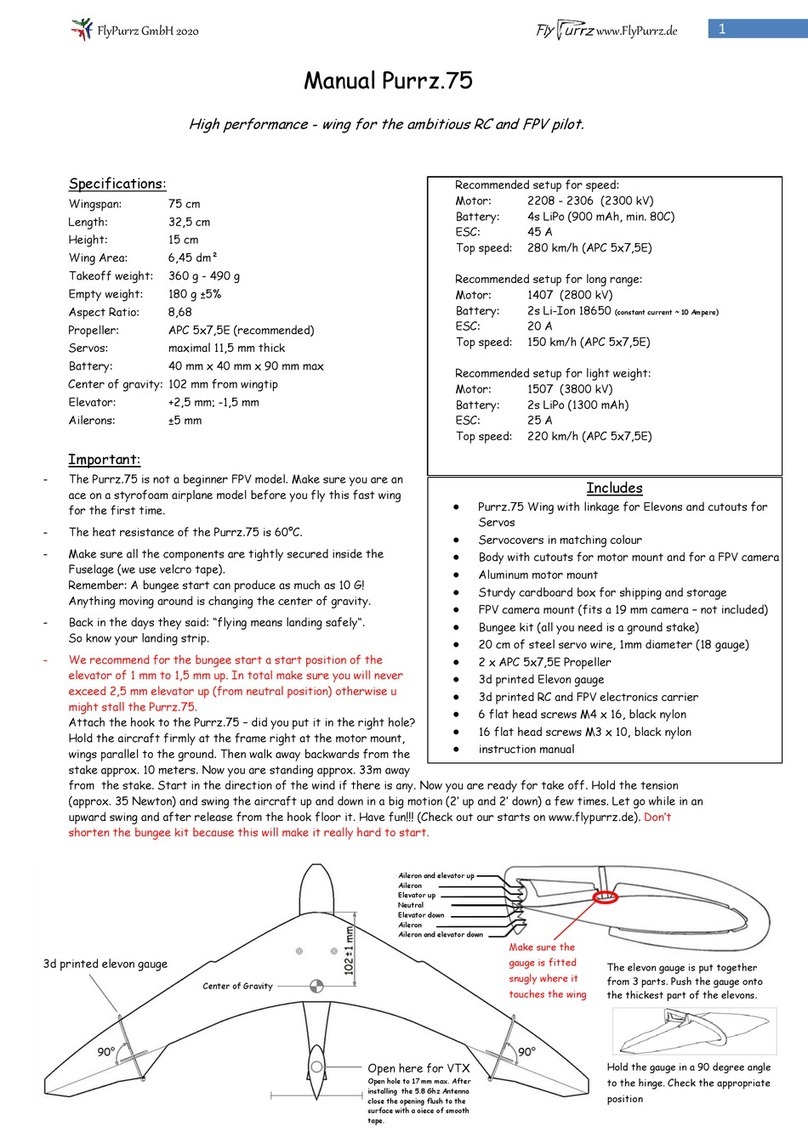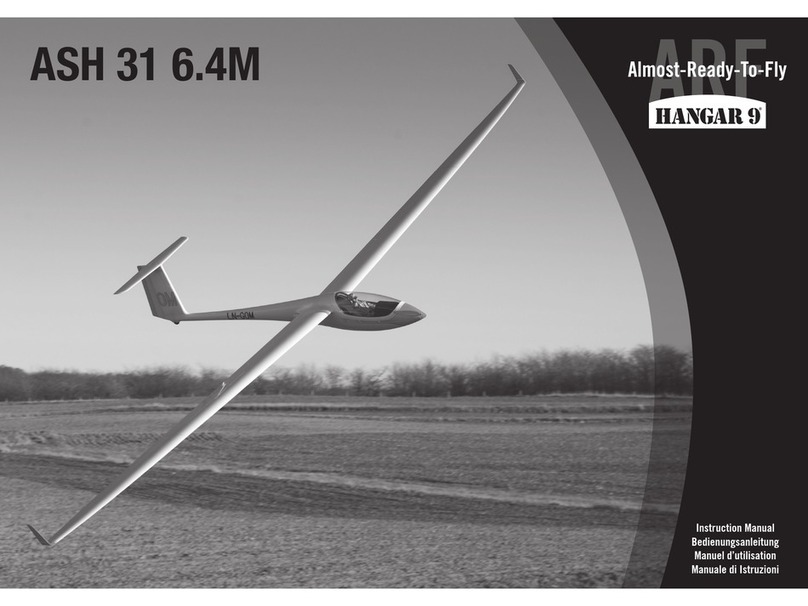FlySynthesis STORCH CLASSIC Technical specifications

TWO-SEATERS ULTRALIGHT AIRCRAFT
STORCHCLASSIC
ENGINE JABIRU 2200
FLIGHT MANUAL
REV.0

Flight manual
Storch Classic Jabiru
Rev. 0 –07/2002 Pag. 2
STORCH CL FLIGHT MANUAL N° ........
THIS FLIGHT MANUAL IS SUPPLIED WITH ULTRA LIGHT AIRCRAFT STORCH CL
N°…………… AND MUST BE KEPT ON BOARD AT ALL TIMES.
PILOT MUST BE AWARE OF ALL “NORMAL” AND “EMERGENCY” PROCEDURES
IN ADDITION TO THE AIRCRAFT LIMITATIONS REPORTED IN THIS MANUAL.
ALL THESE INFORMATION ARE NECESSARY FOR SAFE OPERATION OF THE
AIRCRAFT.
THE FOLLOWING IS THE DATA SHEET FOR THIS PARTICULAR AIRCRAFT
AIRCRAFT.: .....................................................................................STORCH
MODEL:......................................................................................................CL
ENGINE TYPE:..........................................................................JABIRU 2200
BUILDER:.................................................................FLY SYNTHESIS S.R.L.
EDITION:.......................................................................................JULY 2002
AIRCRAFT DATA:
-SERIAL NUMBER ........................................................................................................................
-DATE OF MANUFACTURE .....................................................................................................
-EMPTY WEIGHT (TESTED) ..................................................................................................KG
-FUEL WEIGHT (WITH LIT....)................................................................................................KG
-ALLOWED WEIGHT FOR LUGGAGE ...............................................................................KG
INSTALLED ACCESSORIES (COUNTED IN EMPTY WEIGHT)
----------------------------------------------------------------------------
----------------------------------------------------------------------------
----------------------------------------------------------------------------
----------------------------------------------------------------------------
----------------------------------------------------------------------------
----------------------------------------------------------------------------
----------------------------------------------------------------------------

Flight manual
Storch Classic Jabiru
Rev. 0 –07/2002 Pag. 3
LOG OF REVISIONS
All the revisions to this manual, excluding data concerning weight
and load tests, must be registered in the following table and, in
case of approved sections, signed and stamped from CAAI.
Rev.
Nr.
Chapter Pages
affected
Date
Approval
Date Date of
modify
Signature

Flight manual
Storch Classic Jabiru
Rev. 0 –07/2002 Pag. 4
LOG OF PAGES
Chapter Pages Date Chapter Pages Date

Flight manual
Storch Classic Jabiru
Rev. 0 –07/2002 Pag. 5
INTRODUCTION
This Flight Manual contains all the information necessary for a Correct and SAFE use of the two
seats ultra light
STORCH CL
Such information includes:
Procedures to prepare aircraft for flight;
Normal Procedures;
Emergency Procedures;
Limitations;
Flight performances;
Adherence to these procedures is MANDATORY for the aircraft operator.
FLY SYNTHESIS Srl is not responsible for any damage or injury due to a total or partial non-
observance of directions / procedures stated in this Flight Manual.
FLY SYNTHESIS Srl reserves all rights to the property of this Manual, which can neither be
reproduced partially, nor integrally; this Manual is not to be disclosed to competitors without a
previous written authorization.

Flight manual
Storch Classic Jabiru
Rev. 0 –07/2002 Pag. 6
GENERAL INDEX
LOG OF REVISIONS.................................................................................................................................................3
LOG OF PAGES .........................................................................................................................................................4
FIGURES INDEX.......................................................................................................................................................8
1. DESCRIPTION......................................................................................................................9
FUSELAGE.................................................................................................................................................................9
LANDING GEAR................................................................................................................................................9
BRAKES ..............................................................................................................................................................9
FLIGHT AND ENGINE INSTRUMENTS..........................................................................................................9
SEATS AND SEAT BELTS..............................................................................................................................10
WINDSHIELD...................................................................................................................................................10
WING........................................................................................................................................................................10
EMPENNAGE ...................................................................................................................................................10
FLIGHT CONTROLS...............................................................................................................................................10
TRIM PLANT....................................................................................................................................................11
ENGINE DESCRIPTION .........................................................................................................................................11
ENGINE.............................................................................................................................................................11
PROPELLER.............................................................................................................................................................11
FUEL SYSTEM ........................................................................................................................................................11
ELECTRIC FUEL PUMP ..................................................................................................................................11
ELECTRIC REFUELING PUMP......................................................................................................................11
FUEL SWITCHES.............................................................................................................................................11
ELECTRIC PLANT ..................................................................................................................................................11
GENERAL .........................................................................................................................................................11
ELECTRIC ALIMENTATION CIRCUIT.........................................................................................................12
STATIC AND DYNAMIC PORT ............................................................................................................................12
2. TECHNICAL DATA...........................................................................................................13
DIMENSION.............................................................................................................................................................13
OVERALL DIMENSION..................................................................................................................................13
WING.................................................................................................................................................................13
AILERON ..........................................................................................................................................................13
STABILATOR...................................................................................................................................................13
HORIZONTAL TRIM .......................................................................................................................................13
VERTICAL FIN (RUDDER INCLUDED)........................................................................................................13
RUDDER............................................................................................................................................................13
WEIGHTS.................................................................................................................................................................13
LANDING GEAR .....................................................................................................................................................14
FUEL SYSTEM ........................................................................................................................................................14
ELECTRICAL SYSTEM..........................................................................................................................................14
POWER PLANT .......................................................................................................................................................14
PERFORMANCE WITH JABIRU 2200 ENGINE...................................................................................................15
DIFFERENT USEFUL DIMENSION ......................................................................................................................15
GRAVITY CENTER POSITIONING.......................................................................................................................15
AIRCRAFT LIST OF PARTS...................................................................................................................................18
COCKPIT LIST OF PARTS.....................................................................................................................................19
3. ROUTINE SERVICES........................................................................................................20
FUEL DRAIN............................................................................................................................................................20
REFUELLING...........................................................................................................................................................20
PRE-FLIGHT INSPECTION....................................................................................................................................20
LEFT MAIN LANDING GEAR........................................................................................................................21
LEFT WING.......................................................................................................................................................21
FUSELAGE LEFT SIDE ...................................................................................................................................21
EMPENNAGE ...................................................................................................................................................21
FUSELAGE RIGHT SIDE.................................................................................................................................21
RIGHT WING....................................................................................................................................................21
RIGHT MAIN LANDING GEAR .....................................................................................................................22
FUSELAGE FRONT SIDE................................................................................................................................22
COCKPIT...........................................................................................................................................................22
CHECK BEFORE ENGINE START UP..................................................................................................................22
ENGINE START UP.................................................................................................................................................23

Flight manual
Storch Classic Jabiru
Rev. 0 –07/2002 Pag. 7
BEFORE TAXIING ..................................................................................................................................................23
TAXIING...................................................................................................................................................................23
CHECK ENGINE......................................................................................................................................................24
TAKE OFF................................................................................................................................................................24
CRUISING ................................................................................................................................................................24
NORMAL DESCENT...............................................................................................................................................24
FAST DESCENT ......................................................................................................................................................25
FLYING IN RAINY CONDITIONS.........................................................................................................................25
4. LIMITATION......................................................................................................................26
ENGINE LIMITATIONS (SEE ENGINE MANUAL SPECS.)..............................................................................26
SPEED LIMITATIONS (AT MAXIMUM WEIGHT)............................................................................................26
MANOUVERING LIMITATIONS ..........................................................................................................................26
AUTHORISED MANOUVERS................................................................................................................................26
(RELATED TO NORMAL CATEGORY) ...............................................................................................................26
PROHIBITED MANOUVRES .................................................................................................................................26
STRUCTURAL RESISTANCE................................................................................................................................26
WEIGHT LIMITATIONS.........................................................................................................................................26
WEIGHT & BALANCE LIMITATIONS.................................................................................................................26
FLIGHTS LIMITS.....................................................................................................................................................26
5. EMERGENCY PROCEDURE...........................................................................................27
INTRODUCTION.....................................................................................................................................................27
ENGINE FAILURE...................................................................................................................................................27
POWER FAILURE ...................................................................................................................................................27
LOW ENGINE OIL PRESSURE..............................................................................................................................27
LOW FUEL PRESSURE ..........................................................................................................................................27
RESTARTING ..........................................................................................................................................................28
ENGINE FAILURE DURING TAKE-OFF..............................................................................................................28
ENGINE FAILURE AFTER TAKE-OFF DURING CLIMB...................................................................................28
FORCED LANDING WITH ENGINE STOPPED...................................................................................................28
PRECAUTIONAL EMERGENCY LANDING........................................................................................................29
FIRE ON THE GROUND AND DURING STARTING PROCEDURE..................................................................29
FIRE DURING FLIGHT...........................................................................................................................................29
FIRE IN FLIGHT DUE TO AN ELECTRICAL FAILL. (WITH SMOKE).............................................................30
FIRE ON THE GROUND DUE TO AN ELECTRICAL FAIL. (WITH SMOKE)..................................................30
FIRE IN THE COCKPIT DURING FLIGHT...........................................................................................................30
NON INTENTIONAL FLIGHT IN ICING CONDITIONS .....................................................................................30
SPIN RECOVERY....................................................................................................................................................30
LANDING WITH A FLAT TIRE.............................................................................................................................31
LANDING WITH BRAKE FAILURE .....................................................................................................................31
GLIDE.......................................................................................................................................................................31
ELECTRIC PLANT FAILURE.................................................................................................................................31
GENERATOR INDICATOR ILLUMINATED DURING ENGINE RUN IN FLIGHT...................................31
LOW TENSION INDICATOR ILLUMINATED..............................................................................................31
LOW TENSION INDICATOR ILLUMINATED ON THE GROUND ............................................................31
LOW TENSION INDICATOR ILLUMINATED IN FLIGHT .........................................................................32
FLAPS FAILURE .....................................................................................................................................................32
ENGINE STARTER FAILURE................................................................................................................................32
6. SPECIFICATIONS / PERFORMANCES.........................................................................33
CORRECTION TO THE INDICATED AIRSPEED (IAS)......................................................................................33
WIND INFLUENCE .................................................................................................................................................33
CLIMB ......................................................................................................................................................................33
CRUISE.....................................................................................................................................................................33
LANDING.................................................................................................................................................................34
MAXIMUM RATE OF GLIDE CONFIGURATION...............................................................................................34
7. DIAGRAMS & CHARTS ...................................................................................................35
8. WEIGHT AND BALANCE ................................................................................................40
GENERAL.................................................................................................................................................................40
WEIGHT CONDITIONS..........................................................................................................................................41
WEIGHT AND BALANCE REPORT......................................................................................................................41
MODEL“A” WEIGHT REPORT..............................................................................................................................42
9. APPENDIX...........................................................................................................................43

Flight manual
Storch Classic Jabiru
Rev. 0 –07/2002 Pag. 8
FIGURES INDEX
fig. 1 triptych, STORCH CL MODEL 3 views .................................................................................16
fig. 2 Sketch of Storch –part list –first part.......................................................................................17
fig. 3 Sketch of Storch –part list –second part..................................................................................17
fig. 4 Sketch of Storch –part list –inside cockpit..............................................................................19
fig. 5 PRE-FLIGHT inspection path..................................................................................................20
fig. 6 Table showing available distance from each altitude at best glide ratio..................................34
fig. 7 ROLL DISTANCE / TAKE-OFF DISTANCE -.....................................................................35
fig. 8 LANDING RUN / LANDING DISTANCE ............................................................................36
fig. 9 RELATIVE WIND DIAGRAM VERSUS WIND COMPONENT.........................................37
fig. 10 MAX. RATE OF CLIMB DIAGRAM AT MAXIMUM RPM.............................................38
fig. 11 FLIGHT ENVELOPE ............................................................................................................39
FIG. 12 CONVERSION TABLE KILOMETERS/HOUR (km/h) –KNOTS.................................43
fig. 13 CONVERSION TABLE KNOTS (knots) –METERS / SECONDS (m/sec.).......................43
fig. 14 VERTICAL SPEED (m/sec.) ’ (feet/min.)............................................................................44
fig. 15 AIR CORRECTION TABLE.................................................................................................45
fig. 16 CONVERSION TABLE meters/feet......................................................................................46
fig. 17 CONVERSION OF ALTITUDE PRESSURE FROM mb TO inch Hg................................47
fig. 18 TABLE WITH. STANDARD. ATM. CONVERSION .........................................................48

Flight manual
Storch Classic Jabiru
Rev. 0 –07/2002 Pag. 9
1. Description
In this charter the aircraft is described in all its parts:
FUSELAGE
THE FUSELAGE consists of a cockpit of composite materials with a self-support
Ting shell structure. The cockpit shell contains five transverse frames of composite materials, which
guarantee the rigidity of the structure and high degree of safety and reliability.
The central transverse frame crosses the whole cockpit section and bears the loads of the aircraft
both during flight and on the ground. To it is connected
The tail trunk consisting of a metal tubular beam of the same type as used on the wing. A fireproof
bulkhead, on the edge of which is also fastened the metal engine-support frame, which also supports
the front wheel, closes the front area of the cockpit.
The cockpit ceiling is crossed by a welded-tube frame, which allows good upward visibility without
affecting the structural compactness. The undercarriage is fastened to the belly of the fuselage
through a welded tube structure and the bending element consists of two milled bars of light alloy.
LANDING GEAR
The landing gear has a fixed tricycle configuration where the main part is mounted on two
Self-suspension high resistance aluminum entering of the lower part of the fuselage, fixed
inside connected by tube. The front part is a light metal suspension fork independent and
pivoting directionally intended by the pilot on ground movement, 30° L-R from his
centerline.
The wheels are covered by aerodynamic fairings, easy to remove.
In case of using the airplane without these fairings you must beware of decreasing
seriously the performance of the airplane.
BRAKES
A central system is related to a brake, which act on both wheels.
FLIGHT AND ENGINE INSTRUMENTS
The flight instruments are mounted at the front panel at the pilot’s convenience right or left.
The engine instruments on the opposite side.
The serial mounted instruments are:
Engine instruments: rpm counter, cylinder. head temp., exhaust gas temp., oil temp., oil
press.,
Fuel press., hour counter, fuel low level lamp.
Flight instruments: speed indicator, altimeter, variometer, magnetic compass, slip
indicator.

Flight manual
Storch Classic Jabiru
Rev. 0 –07/2002 Pag. 10
SEATS AND SEAT BELTS Seats
The seats are fixed on the floor part and can be adapted to the size of the pilot or
passenger. The bottom of the seat has an easy take away system to allow underlying
inspection of flight commands. The stick bottom has a protection to avoid that some
objects will fall down, blocking partially the steering components.
SEAT ADAPTION
The seats of the airplane can be adapted to the convenience of the occupant.
These adjustments are only possible on the ground, NOT IN-FLIGHT!
Seat belts
All the seats are equipped with 4-points attached seat-belts independent adjustable by the
Occupant. Safely locked due to a bayonet quick release locking-system.
These can be released by pushing the red bottom at the lock system.
WINDSHIELD
A fixed windshield in lexan material frontally closes the airplane.
WARNING
Before starting the engine make sure that the windows are properly locked at all their
points.
WING
THE WING is designed with full-length slotted detached ailerons (Junker Type) to allow high lift
coefficients and a good degree of maneuverability. The wing contour adopted is of the laminar flow
type to obtain very low frictional resistance and therefore high cruising speeds (for an ultra light
aircraft) with low fuel consumption.
The wing consists of a shell of layered compounds held together by a metal structure consisting of a
tubular longeron to which are fastened the metal wing ribs. The Material Used Is aerospace
Aluminum alloy. The skin is riveted to the structure.
The aileron is built with the same principle as the wing, to which it is connected through pods
fastened to the ribs. The wind bracing consists of metal structural elements of drop-shaped cross
section to increase the streamlining. The wing and fuselage are connected to each other thought two
bearing points: a lower frame which supports the bracing and the landing gear and an upper frame
of welded steel tube which crosses the cockpit ceiling. The first part of the leading edge of the wing
houses the fuel tanks.
FULL COMPOSITE WING ARE NOW AVAIABLE
EMPENNAGE
THE EMPENNAGE is entirely of epoxy-fiberglass. PVC compounds and consists of a fin riveted
directly to the cantilever tail and supporting directly the rudder through two metal hinges fastened
directly to the fin longeron. The horizontal tail assembly is a stabilator with anti-tab, which also
acts as trim-tab, and the whole assembly is fastened to the fuselage through a welded steel unit,
while the smoothness of the controls is guaranteed by two ball bearings.
FLIGHT CONTROLS
THE DUAL CONTROLS are of conventional type with control stick and rudder pedals, central gas
throttle. All the controls are of welded steel construction and milled alloy elements. The ailerons are
controlled directly from inside the fuselage through rigid rods with ball joints. The horizontal tail
elements are operated through double push-pull controls with ball-joint terminals. The rotation
movement of both the ailerons and the stabilator is statically balanced.

Flight manual
Storch Classic Jabiru
Rev. 0 –07/2002 Pag. 11
TRIM PLANT
The airplane is equipped with a manual trim command, which ensures adjustment to
different CG positions and different speeds.
The pitch-trim is installed on the cockpit ceiling.
A blinded cable to the rear transmits the movement. By positioning the level, the attitude is
changing descending or ascending.
ENGINE DESCRIPTION
ENGINE
JABIRU 2200, 4 strokes, 4 cylinders opposite, cooled by air.
Cylinder.: 2200 cm3
Max. take-of power: 80 HP 60 kWat 3300’ (RPM)
For more information, please consult the engine manual.
The instruments are positioned at the instrument panel.
The starting procedure is explained in the concerning charter.
PROPELLER
It is a two-blade mix wood and fiberglass fixed pitch .
FUEL SYSTEM
ELECTRIC FUEL PUMP
The electric fuel pump is provided as an auxiliary pump.
This pump ALWAYS MUST BE ON during take-off and landing.
ELECTRIC REFUELING PUMP
The electric pump is provided for tank refueling procedure.
FUEL SWITCHES
• The fuel switches are positioned between seats frontward at the central console
WARNING
The fuel tab must be in closed position in case of emergency landing, during engine fire,
and during fuel plant inspection.
Always check before each flight that the position is open to avoid engine failure during
take-of.
ELECTRIC PLANT
GENERAL
The STORCH CL is provided with an electric plant providing continuous 12V (DC).
The alternator is integrated in the engine and connected to a rectifier with tension regulator
who provides electricity to the engine and electrical plant.
The users:
Engine instruments, fuel pump.
A 12V accumulator loaded by the alternator provides tension for the engine instruments
and for electric plant alimentation, when engine is stopped.
The accumulator also supports the alternator in case of high electrical consumption.
(Strobe –lights, landing-lights, and navigation lights).
Automatic fuses secure all the electric plant. The main switch (contact switch) powers the
entire electric plant of the airplane.

Flight manual
Storch Classic Jabiru
Rev. 0 –07/2002 Pag. 12
ELECTRIC ALIMENTATION CIRCUIT
The electric power is ensured by two independent circuits, powered by the generator and
controlled by a pick-up system. This assures a correct functioning electric system in case
of failure of the general electric plant.
The alimentation is supplied with a switch connected at mass for each circuit, including two
separate contacts, operated by one key.
WARNING
When the engine is not running, but the magnetos and the main switch is in the on
position, it is prohibited to turn the propeller manually!
This can start the engine with heavy consequences for person in the propeller area.
STATIC AND DYNAMIC PORT
The total pressure intake is located on the tip of the right wing and is calibrated.
The static pressure is registered by the same pitot who has small lateral holes not
disturbed by the dynamic pressure.
The tubes connected to the instrument are guided from the wing, to the fuselage into the
instrument panel. The dynamic pressure tubes are colored white, the static ones blue.
Along the tubes junctions are positioned to allow drain and control of these tubes.

Flight manual
Storch Classic Jabiru
Rev. 0 –07/2002 Pag. 13
2. Technical data
DIMENSION
OVERALL DIMENSION
Wing Span: 10.14 m
Length: 6.25 m
Height: 2.44 m
WING
Area: 13.0 m2
Wing chord: 1.34 m
Wing load: 33.1 kg/m2
AILERON
Area (each): 1.1 m2
Span: 4.58 m
Chord: 0.25 m
Travel (*): +2° -32°
STABILATOR
Area: 1.65 m2
Span: 2.45 m
Chord: 0.69 m
Travel (*): +12° -17°
HORIZONTAL TRIM
Travel (*): +30° -27°
With max forward trim position and stabilator max up and max down
Travel (*): +20° -32°
With max backward trim position and stabilator max up and max down
VERTICAL FIN (RUDDER INCLUDED)
Area: 0.96 m2
Height: 1.28 m
Medium chord: 0.93 m
RUDDER
Area: 0.59 m2
Height: 1.20 m
Average chord: 0.48 m
Travel: +/-22°
Note: angles are taken considering angle of top fuselage flange (where windows are
attached) of 3° towards front side up. WEIGHTS
Basic configuration with JABIRU: 283 kg
Max Take-off weight: 450 kg
Min Pilot weight: 55 kg
Max Pilot + Passenger weight: 172 kg
Max fuel capacity: 60 lit

Flight manual
Storch Classic Jabiru
Rev. 0 –07/2002 Pag. 14
LANDING GEAR
Type: Trike with directional front wheel
Main gear track: 1.6 m
Main wheel –Nose wheelbase: 1.4 m
Main wheel tire: 4.00x6’’
Nose wheel tire: 4.00x4’’
Inflation pressure: Nose wheel: 1.2 kg/cm2
Inflation pressure: Main wheel: 2.0 -2.2 kg/cm2
FUEL SYSTEM
Type: two wing extractable tank with 2-way 2-selector cock for
delivery; with drain tube.
Fuel feed: mechanical pump; auxiliary electrical pump.
Filter: fuel filter-placed before mechanical and electrical pump.
Tank capacity: 2 x 30 lt.
Not usable fuel: 2 lt.
ELECTRICAL SYSTEM
Type: Independent circuit for magnetos ground; 12 Volts Main
circuit for instruments and battery –generator link; Rectifier
with Voltage regulator. Fuses on Main and auxiliary circuits
Battery: 12 Volts
POWER PLANT
Engine: Jabiru 2200, 4 Strokes
Displacement: 2200 cm3
Cylinder: 4 Opposite cylinders
Ignition: Dual breaker less capacitor discharge ignition
Feed: one constant depression carburetors
Cooling: air-cooling system (ram air on cylinder)
Cooling accessoriesoil radiator
Starter: electrical
Max power: 80 HP –60 kW at 3300 rpm.
Fuel: min RON 95, leaded or unleaded, AVGAS 100 LL

Flight manual
Storch Classic Jabiru
Rev. 0 –07/2002 Pag. 15
PERFORMANCE WITH JABIRU 2200 ENGINE
Data verified with following specifications: weight 450kg.
Max efficiency (E max): 13.8
(at 89 km/h at
1st position
flap) 13,8 ( at 55 Kts -1st
flap position)
Stall speed (Vso): 57 km/h 30,8 Kts
Stall speed with flaps extracted
(Vs1): 63 km/h 34,0 Kts
Max allowable speed with
extracted flaps 2nd & 3rd position:
110 km/h 59,4 Kts
Top speed (Vh): 165 km/h 89,1 Kts
speed at 75 % power
(2350 rpm): 124 km/h 67,0 Kts
Cruise speed at 2800 rpm : 151 km/h 81,5 Kts
Cruise speed inside turbulence: 145 km/h 78,3 Kts
Best glide ratio speed: 110 km/h (0° flap) 59,4 Kts (0° flap)
Best glide ratio speed: 89 km/h (1° flap) 48,1 Kts (1° flap)
Maneuvering Speed (Va): 130 km/h 70,2 Kts
Speed never exceed (Vne): 180 km/h 97,2 Kts
Take-off run (a.s.l./ISA) at Max
weight: 90 m295 feet
Landing run (a.s.l./ISA) at Max
weight: 120 m328 feet
DIFFERENT USEFUL DIMENSION
Distance between propeller blade and ground (at 450kg): > 0.27 m
GRAVITY CENTER POSITIONING
Max forward limit: 30% M.A.C. corresponding to 402 mm
Max afterward limit: 36% M.A.C. corresponding to 482 mm

Flight manual
Storch Classic Jabiru
Rev. 0 –07/2002 Pag. 16
fig. 1 triptych, STORCH CL MODEL 3 views

Flight manual
Storch Classic Jabiru
Rev. 0 –07/2002 Pag. 17
fig. 2 Sketch of Storch –part list –first part
FIG. 3 Sketch of Storch –part list –second part

Flight manual
Storch Classic Jabiru
Rev. 0 –07/2002 Pag. 18
AIRCRAFT LIST OF PARTS
1. Right aileron
2. Connecting tube for aileron flight control
3. Stabilator
4. Vertical fin
5. Rudder
6. Trim tab, acting also as anti servo tab
7. Left aileron
8. Push pull wires for rudder and stabilator flight control
9. Aileron flight control rod inside cabin
10. Left rudder pedal
11. Steering wheel control rods
12. Right rudder pedal
13. Stick lever
14. Right wing tank
15. Refueling place
16. Battery
17. Left wing tank
18. Ballistic parachute
19. Main landing gear
20. Cockpit air intake
21. Engine cowling
22. Fuel draining
23. Front wheel
24. Engine
25. Propeller
26. Handle grip
27. Anemometric probe

Flight manual
Storch Classic Jabiru
Rev. 0 –07/2002 Pag. 19
fig. 4 Sketch of Storch –part list –inside cockpit
COCKPIT LIST OF PARTS
1. Wing frame
2. Parachute handle (accessory)
3. Trim handle
4. Flap handle (located on ceiling back-side of cabin)
5. Instrument panel
6. Cabin strut
7. Right brake lever
8. Choke
9. Seat
10. Right fuel valve
11. Left fuel valve
12. Throttle lever
13. Left brake lever
14. Control lever
15. Rudder pedal

Flight manual
Storch Classic Jabiru
Rev. 0 –07/2002 Pag. 20
3. ROUTINE SERVICES
FUEL DRAIN
CAUTION:Check that ignition key is switched off.
Draining is accomplished by operating the cock located in the lower fuselage section, just
after the firewall frame Draining 80-100 cc (5-6 cubic inch) is considered enough to
completely eliminate the water in the tank.
Warning: This operation should be performed before moving the aircraft from its Parking
place to avoid that condense water present on tank bottom emulsify with fuel. Check for
water presence in tank. In that case, repeat fuel drain operation.
REFUELLING
CAUTION: use only type of gasoline as stated in engine manual.
Refueling must be done using electrical pump switched on inside cockpit.
PRE-FLIGHT INSPECTION
Warning:All checks in this section should be carried out BEFORE EACH FLIGHT, even if
last flight was very short. These checks should be performed with great care directly from
aircraft user.
fig. 5 PRE-FLIGHT inspection path
Caution: Sight check is important to verify that there are no failures or excessive
clearance.
Table of contents
Other FlySynthesis Aircraft manuals

